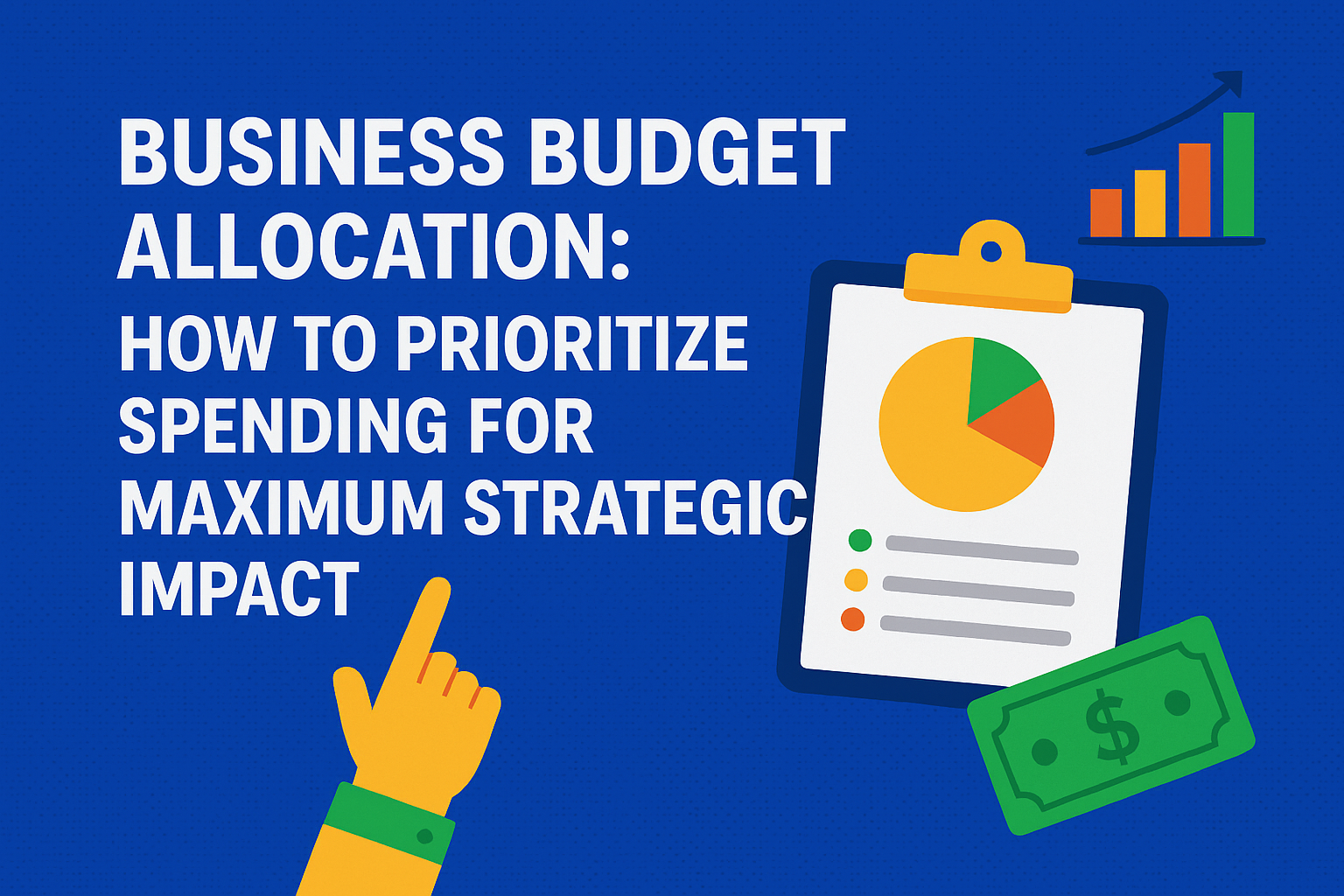By Clark Mago
In a fast-moving market where competition is fierce and customer expectations are higher than ever, every dollar in your marketing budget needs to work harder. Poor allocation can lead to wasted resources, stalled growth, and missed opportunities. Strategic Business Budget Allocation ensures that your spending directly supports your company’s goals, aligns with performance data, and drives maximum ROI.
If you’re tired of spreading your budget too thin or investing in channels without clear returns, it’s time to shift from guesswork to a strategic, data-driven approach.
Step 1: Start with Your Strategic Goals
Before assigning a single dollar, clearly define your short- and long-term business objectives. Are you focused on increasing brand awareness, driving more online sales, improving lead quality, or expanding into new markets?
Your Business Budget Allocation should mirror these priorities. For instance:
- If you’re aiming for rapid customer acquisition, paid channels like Google Ads or social ads may demand a larger share of your budget.
- If your long-term focus is building organic visibility, then investing in SEO and content marketing becomes a higher priority.
When every spending decision traces back to a defined business goal, you avoid scattershot marketing and focus only on activities that drive measurable impact.
Step 2: Identify High-Performing Channels
One of the biggest mistakes businesses make is continuing to invest in underperforming channels simply because “that’s what we’ve always done.” A smart Business Budget Allocation is based on cold, hard performance data.
Start by reviewing:
- Cost per lead (CPL)
- Conversion rates
- Customer acquisition cost (CAC)
- Return on ad spend (ROAS)
Identify which channels are delivering the best ROI, and which ones are consistently underperforming. Channels that drive qualified leads at a sustainable cost should be prioritized, while those with low returns should either be optimized or scaled back.
Step 3: Balance Short-Term Wins with Long-Term Growth
Quick wins are essential to keep momentum and justify your spend, but you can’t ignore the long game. A healthy Business Budget Allocation balances:
- Short-term, conversion-focused campaigns (like Google Ads, retargeting, and paid social) that bring immediate results.
- Long-term brand and organic growth strategies (SEO, email marketing, content creation) that compound over time.
For example, running a well-structured Google Ads campaign can bring in immediate high-quality traffic, while ongoing SEO work ensures you’re building a foundation for future inbound leads without paying for every click.
Step 4: Allocate for Optimization and Testing
Many businesses set their budget, run campaigns, and forget to leave room for testing new strategies. Without a testing budget, you risk plateauing.
Allocate a percentage of your budget—often 5–10%—for experimenting with:
- New ad creatives and formats
- Emerging platforms or channels
- A/B testing landing pages and offers
- Advanced targeting techniques in Google Ads
This approach keeps your marketing adaptive and ensures you’re not falling behind as trends and technology evolve.
Step 5: Monitor and Adjust Monthly
Business and market conditions change constantly, so your Business Budget Allocation should never be static. Review campaign data monthly and adjust allocations based on performance.
If Google Ads is delivering lower CPL and higher lead quality compared to other paid channels, it deserves a bigger slice of the pie. If a channel is underperforming, reallocate that spend to proven winners instead of letting it drain your ROI.
Step 6: Leverage Expert Management
Even with a well-thought-out budget, execution is where the real results happen. Managing PPC and SEO effectively requires deep expertise, ongoing optimization, and precise tracking.
Many companies waste thousands every month simply because campaigns are poorly set up or not optimized regularly. Partnering with an experienced agency ensures that your allocated budget works harder, delivers better ROI, and gives you the performance transparency you need.
Final Thoughts
The difference between a stagnant marketing budget and one that drives real growth comes down to strategic planning, constant optimization, and smart channel prioritization. By making Business Budget Allocation a deliberate, data-driven process, you ensure that every dollar spent moves your company closer to its strategic goals.
If you want your Google Ads campaigns to deliver consistent, high-quality leads while keeping acquisition costs low, it’s time to work with experts who treat your budget like their own.
Ready to make your budget work harder?
DoubleDome Digital Marketing specializes in Google Ads management that maximizes ROI and drives predictable growth. Our data-driven strategies ensure every dollar is allocated for maximum impact. Contact us today to schedule your Google Ads strategy session and start seeing measurable results.









